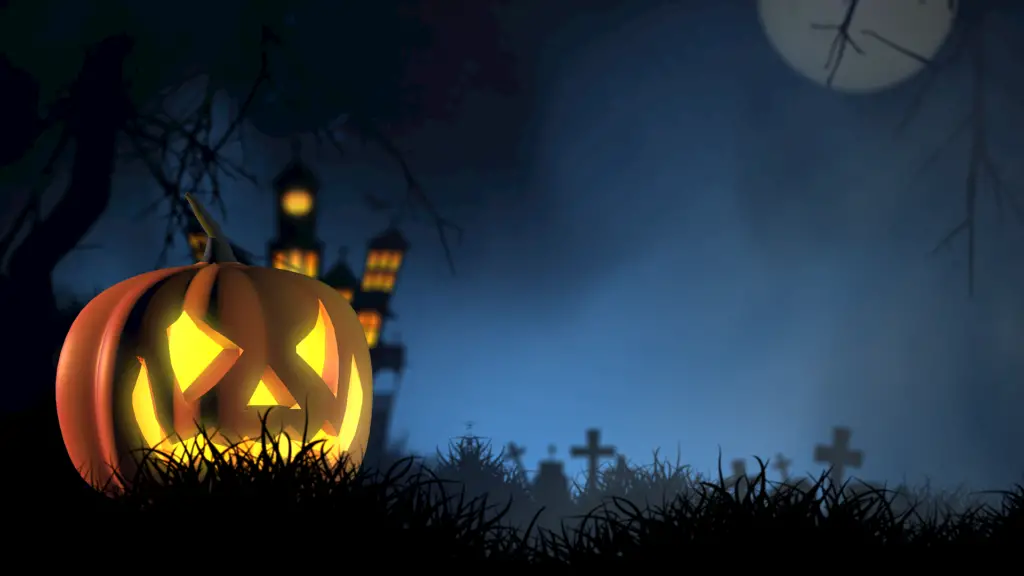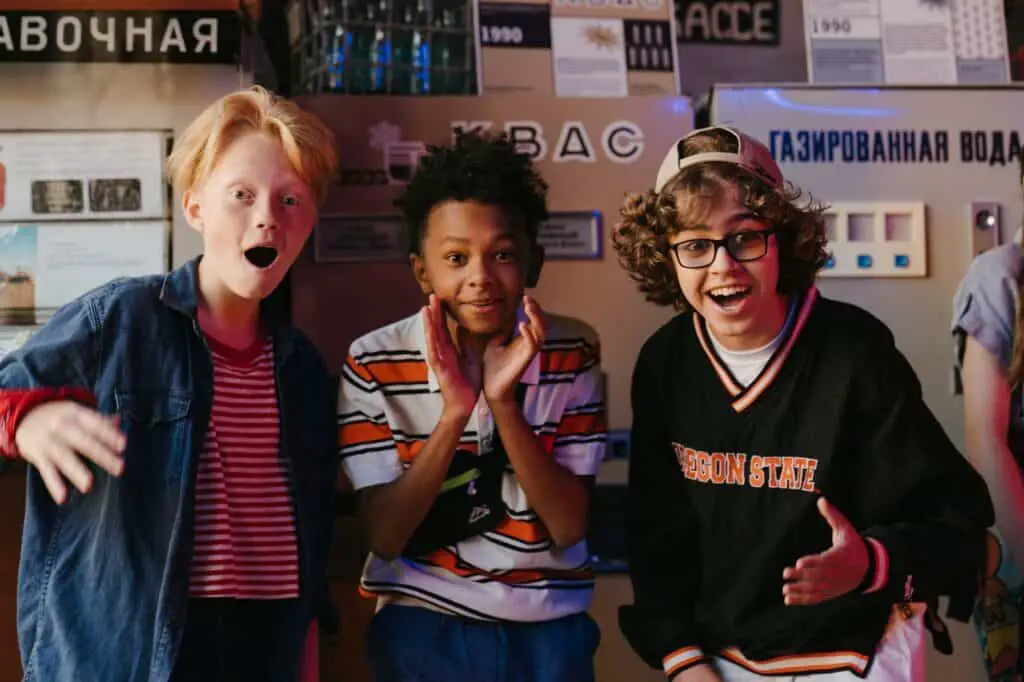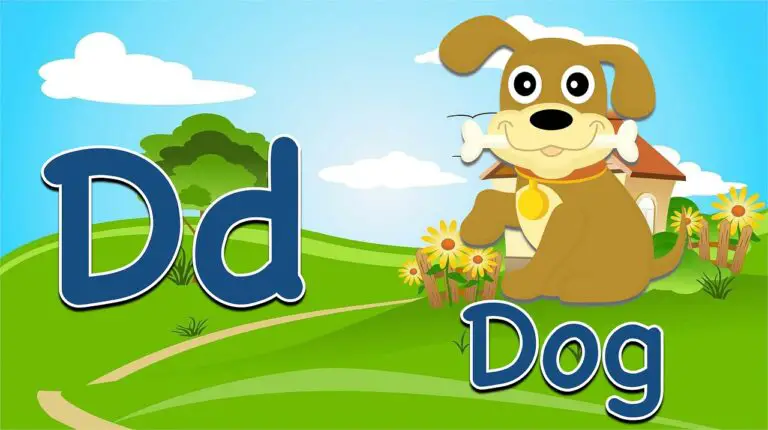Every year, Halloween comes round and brings an element of spookiness and fun. EFL/ESL students adore learning about the festival, dressing up as monsters and doing all sorts of spine-chilling activities.
That’s why I’ve made this list of 5 terrific activities you can do in your English classes!

You won’t find any ghastly worksheets or ghoulish grammar drills here, but plenty of engaging and effective ways of boosting their language skills and delving into the strange culture of this worldwide event.
So clean out your coffins, pick up all your disconnected limbs and get ready for some horrifying classes!
1. Spooky Speech
This is a rather silly but effective pronunciation activity. Normally, drilling the correct way of saying words can be quite boring, but students, especially kids, love it when they can put on silly voices.
First, you need some words. New vocabulary is fine, as are Halloween-related words, or particularly tricky ones that you want to work on, like “vegetable” or “library”

Then get your students to show you their spooky voices. You can add some more vocab here as they learn verbs about different ways of making sounds. For example:
- Howling
- Screeching
- Growling
- Droning
- Screaming
- Cackling
- Hissing
Combine the vocab and the voices together and get your students practicing the pronunciation. Can they howl “vegetable” or cackle “library”?
Of course, it’s worth practicing them in normal voices, too!
2. Monster Factory
Monster Factory is one of my favourite games for beginners and younger learners because they practise speaking, listening and vocabulary about body parts. Plus, what’s Halloween without some horrible monsters?
I’ve written the instructions below, but you can also watch this video where I explain how to play in detail.
Everyone playing needs drawing materials, ideally a dry-erase board, but paper and pencils are fine too.
Before the game, you need to cut up some slips of paper and divide them into two piles. On the slips in the first pile, write numbers from 1 to 8. I recommend writing more lower numbers than high numbers. Alternatively, you can use a die (six-sided or eight-sided).
In the second pile, write a different body part on each slip. Start with normal human body parts. Don’t include head and torso or any joints. If you want to make it spookier, add some extras like tail, wings, horns, etc. You should only have one slip for each body part.
Fold up all the slips in both piles so the writing can’t be seen.
Now we can start the game. First, everyone should draw a body and a head, but no legs or arms or any facial features.
Then pick a student to be the “designer” of the first monster. They should randomly take one slip from each pile (or roll the die if you used one instead of the first pile). They’ll get a number and a body part. They should read it out loud, making a full sentence if they can: “Give your monster three eyes!”.
Everyone draws three eyes on their monster. The “designer” takes two more slips and reads them out, and the others draw the result, just like before. Do this 4-5 times and everyone will have a pretty crazy monster!
3. Terrifying Theatre
I always do some kind of theatre or film at Halloween. For some reason, students always want to make a zombie movie, and it’s a great way to challenge their English skills.
The easiest way is to put them in small groups and get them to prepare some short plays. You can give them a specific theme for the play, or leave it up to their imaginations.
Alternatively, make a short film. This is easier to manage with a small group, but if you have students who can record and edit independently, you can definitely make it work.
Part of the process should be planning and script-writing. It’s a good idea to structure this: get them to make a storyboard, consider their characters, think about what props and space they have available, and come up with their lines.

TIP: Keep it short. A couple of minutes should be the absolute maximum, otherwise this activity can go on for an eternity. Films take much longer than plays.
I advise setting time-limits on different stages of the project. Some students tend to waste time when planning and never come up with anything concrete. If you give them half an hour to come up with their story and make a storyboard, they’ll have to work fast.
And once they’ve finished, they can perform their plays to the rest of the group, or record the film. If you’re doing films with multiple small groups, I recommend getting them to do the recording in their own time, otherwise they’ll waste hours and hours of class time.
The good thing about films is you have something you can share with parents that will last forever.
4. Halloween role play
If making a film or short play seems like too much, you can do some role-play scenarios at Halloween. They’re quick, enjoyable and develop fluency like no other activity.
What makes role play special is it’s completely improvised. It relies on students being able to come up with speech on the spot.
As you can imagine, then, it’s not for beginners. I’ve found it works brilliantly at the pre-intermediate and intermediate level where speaking fluency can develop at a rapid pace.
It’s best done in pairs, or occasionally threes. You give them a situation and each person their own role. Usually there’s a problem to resolve or a conflict to deal with. They act out the situation according to their role, all the while speaking in English.
They can last as little as 2 minutes, or as long as half an hour if they get really stuck into it. Just remember, it’s not a performance. There are no scripts, no audience – just people talking to each other.
If I haven’t convinced you to use role play yet, watch this video where I explain exactly why you need to do it in your classes:
5. Pumpkin carving
Yes, the old tradition of hollowing out a big orange vegetable and giving it a face. Great fun with students of all ages and, with a bit of clever adaptation, you can get some great listening, reading, writing and vocab practice out of it.
Obviously you’re going to need some pumpkins and some knives. It’s probably best not to do this with young children, and of course, always follow safety procedures.
Oh, and prepare for plenty of mess. Covering tables with old newspaper is a good idea, and have a few bins/boxes around for the innards to go in.

The best way of approaching this is for students to follow instructions. They can read them, watch a video, or listen to you explaining how to do it.
Just by doing that they’ll have to listen/read carefully, but you can add another level of English to it.
With some good, dark marker pens, get them to write English words all over the pumpkin once they’ve finished carving it.
You can choose if you want them to write certain words, or just leave it up to them. It’s always a good option to have them write Halloween-related vocab. And let them decorate it too – spider webs and little drawings are fun additions.
With more advanced students, challenge them to write warning messages or even a creepy story on the pumpkin!
At the end, you’ll have a super creepy pumpkin covered with lots of scrawled messages.
This activity is a great example of arts and crafts in English classes. You can find out the best way of doing this kind of thing by reading my article on the subject.







